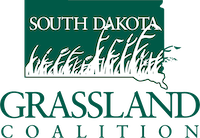Whether the goal is having a uniform group of calves to sell or avoiding hot weather during late spring calving, keeping the calving season within a narrow window can add to the cow-calf producer’s bottom line. Kiernan Brandt, SDSU Cow Calf Field Specialist shared some observations.
The basic first steps include matching cows to the resources available. Record keeping and nutrition are also important. Keep in mind that cows calve at 283 days plus or minus 20 days. Separating consistent early calvers from the chronically late ones can help with initial implementation.
Nutrition is essential for breeding back
One of the downsides of calving later in the year is that when it’s time to put bulls out in August, pastures may be starting to dry up. Especially under drought conditions, adding extra nutrition can be worth increasing conception rates. A bull’s physiology is designed to perform optimally for about 60 days with the best performance early in the breeding season. Taking them out early is a simple way of working toward a shorter season.
Estrus synchronization and AI are tools that can be used. If uniform size calves is the goal, 10 days can make a big difference. SDSU research shows synchronization can pencil out. Prostaglandin shots are currently about $3 a shot. Progesterone or CIDR implants are a well proven technology that is effective when cows that are thin or within 60 days postpartum. Implants are about $13/head and can be reused twice according to Brandt. He is able to help design protocols.
Calving Starts May 1st
About ten years ago, Rock Hills Ranch in Lowry, SD pulled the heifer bulls after 30 days and has done so every year since. More heifers are exposed than needed. The number of opens is fairly low. They don’t lose much value as they can be marketed as feeder cattle. Last year the breeding season was shortened from 60 to 45 days for the two and three-year-olds. Calving records helped predict what to expect. Because the cows were exposed for only 30 days as heifers very few were open. Cows may eventually string out calving over the years and are dealt with accordingly. Older open cows are culled or bred later and sold as fall-calving cows. Calving starts May 1 this year.
Luke Perman’s observation is that calves born early in the season move with the herd better when switching pastures. “July calves just never seem to do as well,” he said. A year round mineral program helps keep cattle in good condition. An effort is made to utilize a pasture with some new regrowth during breeding season.
Another Case Study
Olivia Amundson, Crooks, SD, worked with Brandt on calving distribution research based on sale barn data and has advised her family’s operation with shortening their calving season. They have simply pulled bulls earlier and also used natural service plus synchronization with CIDR protocol and a bull and CIDR with AI.
Using all of the above, it took about three years to narrow calving to a 60 day season. She emphasized the importance of considering facilities, resources and labor when making breeding and calving decisions. Every method of shortening calving takes time. The “fancier” methods take more labor and facilities but may shorten the season quicker. If calving typically strings out over 3 months, it’s probably best not to pull bulls after 45 days this year unless one is willing to deal with a large number of open cows.
The following podcasts by Brandt and Amundson talk about calving distribution and can be found on most podcast services or on the university websites: Sale Barn Data and Calving Distribution and Herd Health or the University of Minnesota Moos Room podcast, episode 124.
Garnet Perman is a freelance writer and ranches with her husband, Lyle, near Lowry, SD
Watch some Calving Consideration Videos to learn more!
Source: SDGC Newsletter
